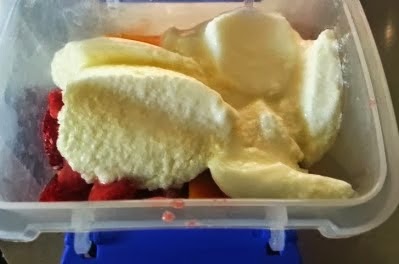I recently came across the concept of resetting your life to Zero, and I thought it was a perfect topic for my final blog post for the A-Z of Simple Living challenge. It has been so much fun coming up with posts every day based around my simple living hobby, and I now have a wealth of information to refer back to. Thank you to all those around the world who popped in to visit...you are always welcome.
Resetting your life to Zero is basically taking everything back to being as uncomplicated as possible, in order to feel peace, and to focus on the next day or week of your life. Here are a few examples:
1. Resetting Your Home to Zero
Resetting your home involves returning it to it's 'resting' state. That state where you know everything is up to date. Once the dishes are done, everything is put away, the washing is up to date and the floors are mopped or vacuumed for example, then you can turn your focus to other things. I try and do this before going to bed every night, and before I leave for work in the morning. It does not always get done, but I do feel so much better, and more relaxed, when it is. By Sunday night I like to have the larger jobs such as the clothes folded and put away, in order to start off the week refreshed and organised. I realise that this is what I was doing on my holidays, getting my home back to zero.
Resetting your life to Zero is basically taking everything back to being as uncomplicated as possible, in order to feel peace, and to focus on the next day or week of your life. Here are a few examples:
1. Resetting Your Home to Zero
Resetting your home involves returning it to it's 'resting' state. That state where you know everything is up to date. Once the dishes are done, everything is put away, the washing is up to date and the floors are mopped or vacuumed for example, then you can turn your focus to other things. I try and do this before going to bed every night, and before I leave for work in the morning. It does not always get done, but I do feel so much better, and more relaxed, when it is. By Sunday night I like to have the larger jobs such as the clothes folded and put away, in order to start off the week refreshed and organised. I realise that this is what I was doing on my holidays, getting my home back to zero.
2. Resetting Your Inbox to Zero
This is something I get slack with and my hotmail email account is the worst...full of pages of newsletters that I don't even read, so I have unsubscribed to anything that is not of interest, and now I am not missing so many emails. I have also made better use of folders to find emails quickly. Uncluttering my inbox has reset it back to Zero, and I now don't worry that I may miss something important.
3. Resetting Yourself to Zero
The fact that I chose mindfulness for my word this year is a wonderful thing because it fits so neatly within this concept of resetting to zero. By remembering to focus on the here and now, and appreciating and celebrating my life, I find that my internal clutter is reducing. I am learning to rest and take time for myself in order to recalibrate and figure out where to go next, what project to focus on, or what book to settle in with, comfortable in knowing that most things in my life are in order...it is taking time though, and I just hope that my work does not spiral out of control again because that took a while to recover from.
Patricia from Brainy Woman says that the first thoughts that come into your mind within the first five minutes of the day are the ones that create your day, so start with positive ones. Waking up with your first thought of being thankful for such a wonderful day, will ensure having a good day. She says that starting from zero means returning to your zero state where nothing exists but everything is possible...and I love that concept.
Colin from Exile Lifestyle says that resetting to Zero helps you to focus and think clearly when all the little stresses of the day are neutralized. It’s about looking at who you are, what you want, and in what direction you’re currently moving. It’s about being happier and more fulfilled, and achieving both goals by giving yourself the chance to change direction quickly, and with as few negative consequences as possible, should such a change be warranted.
 |
| Image Source |
 |
| Image Source |
Colin from Exile Lifestyle says that resetting to Zero helps you to focus and think clearly when all the little stresses of the day are neutralized. It’s about looking at who you are, what you want, and in what direction you’re currently moving. It’s about being happier and more fulfilled, and achieving both goals by giving yourself the chance to change direction quickly, and with as few negative consequences as possible, should such a change be warranted.






















































